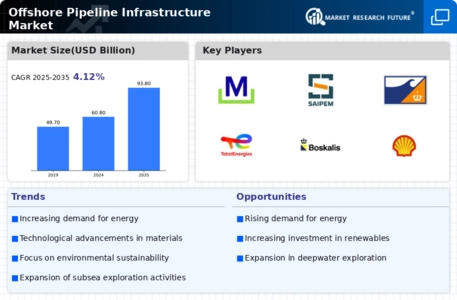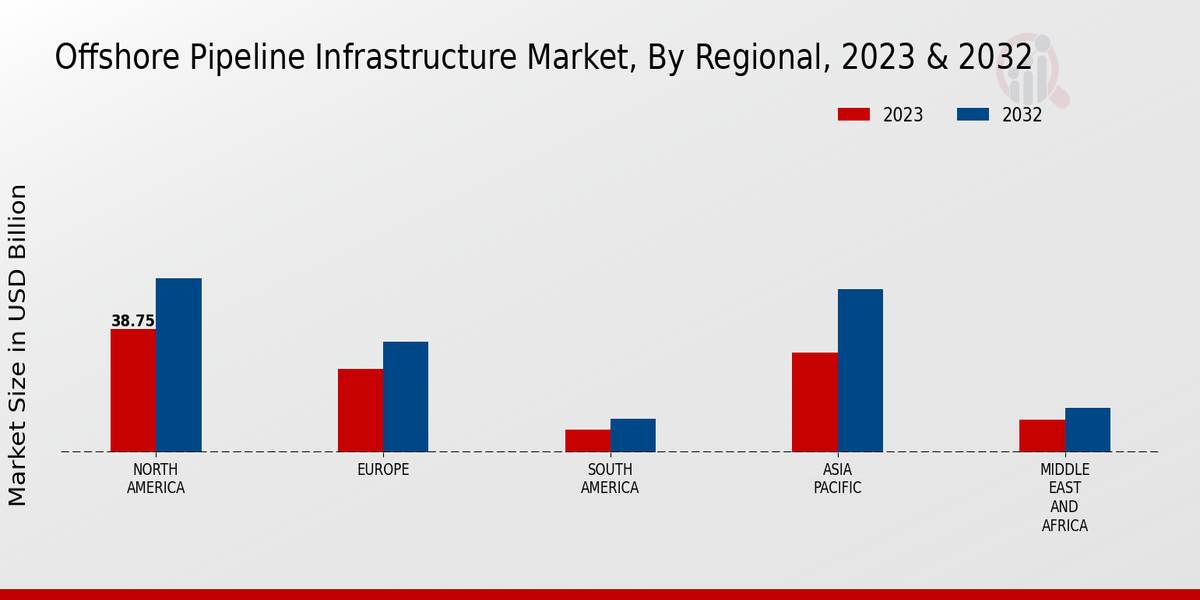Market Trends and Projections
Growing Demand for Energy Resources
The Global Offshore Pipeline Infrastructure Market Industry experiences a surge in demand for energy resources, driven by the increasing global energy consumption. As countries strive to meet their energy needs, offshore pipelines play a crucial role in transporting oil and gas from remote locations to processing facilities. The market is projected to reach 60.8 USD Billion in 2024, reflecting the essential nature of these infrastructures in the energy supply chain. This demand is further fueled by the transition towards cleaner energy sources, necessitating efficient transportation methods for both traditional and renewable energy resources.
Regulatory Support and Environmental Standards
Regulatory support and stringent environmental standards shape the Global Offshore Pipeline Infrastructure Market Industry, as governments worldwide implement policies to ensure safe and sustainable operations. Compliance with these regulations often necessitates investment in advanced technologies and practices, which can enhance the overall safety and efficiency of offshore pipelines. Countries with extensive offshore resources, such as the United States and Norway, have established frameworks that promote responsible development while protecting marine ecosystems. This regulatory environment is likely to foster growth in the market, as companies adapt to meet these evolving standards.
Increasing Investment in Renewable Energy Projects
The Global Offshore Pipeline Infrastructure Market Industry is witnessing increased investment in renewable energy projects, particularly in offshore wind and solar energy. As nations commit to reducing carbon emissions, the need for efficient infrastructure to transport energy from offshore renewable sources becomes paramount. This shift is expected to drive the market's growth, with projections indicating a rise to 93.8 USD Billion by 2035. The integration of offshore pipelines into renewable energy initiatives not only supports energy transition goals but also enhances energy security, making it a pivotal area for future investment.
Technological Advancements in Pipeline Construction
Technological advancements significantly influence the Global Offshore Pipeline Infrastructure Market Industry, enhancing the efficiency and safety of pipeline construction and maintenance. Innovations such as automated welding techniques, advanced monitoring systems, and improved materials contribute to the durability and reliability of offshore pipelines. These advancements not only reduce operational costs but also minimize environmental risks associated with pipeline failures. As a result, the market is expected to grow steadily, with a projected CAGR of 4.02% from 2025 to 2035, indicating a robust future for technologically advanced offshore pipeline projects.
Global Economic Recovery and Infrastructure Development
The Global Offshore Pipeline Infrastructure Market Industry benefits from global economic recovery and infrastructure development initiatives. As economies rebound, there is a renewed focus on enhancing energy infrastructure to support industrial growth and urbanization. Governments are increasingly investing in offshore pipeline projects to ensure reliable energy supply, which is essential for economic stability. This trend is likely to contribute to the market's expansion, as infrastructure development is a critical component of economic strategies in many countries. The combination of economic recovery and infrastructure investment positions the offshore pipeline sector for sustained growth.















